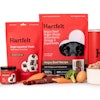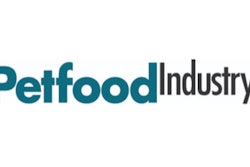
Following a global pattern, Canadian pet food and treat makers grew throughout the pandemic although challenged by shipping, labor and similar concerns. Canadian pet food exports continually grew from 2016 to 2021, as reflected in data provided by the Pet Food Association of Canada (PFAC) from Agriculture Agrifood Canada (AAFC) via Statistics Canada.
“The Canadian pet food industry is expected to grow at a CAGR of 4.75% per year through to 2025,” Chris Nash, executive director of the Pet Food Association of Canada (PFAC), told Petfood Industry in an email. “Exports have grown on average 11% per year for the last 5 years and expected to continue to grow, as Canadian companies ship pet food to over 90 countries around the world.”
Although Canada exports to numerous countries, the United States and China make up a large share of the total. Considering imports, the relationship between Canada and the US is yet stronger, with no other nation coming close to Canada’s North American neighbor. In 2016, Canada imported CAD775.1 million of pet food and treats from the US. That increased to CAD1.202 billion by December of 2021. From 2016 to 2021, 90% or more of Canada’s total pet food imports consistently came from the US.
Transport and logistics challenges for pet food brands in Canada
The pet food industries of the Unites States and Canada share many consumer trends and brands. The two countries remained closely linked throughout the pandemic, sharing in similar logistical challenges.
As with many other places around the world, the pandemic resulted in challenges to the Canadian pet food supply chain and labor market, Nash said.
“Similar to other areas in North America and globally, there have been driver shortages, trailer and container shortages which have had some impact,” he said. “In terms of ingredients, there hasn’t been any significant impacts from supply chain challenges that I have heard. One Canadian specific impact was the flooding in British Columbia in November 2021 that made it difficult to ship from the middle or East of Canada to the west coast, but our government negotiated a temporary solution with USDA to allow pet food to ship around the flood damaged highways and transit through the US to its final destination, so that impact was minimal in the end, and the roads are now fixed.”


















